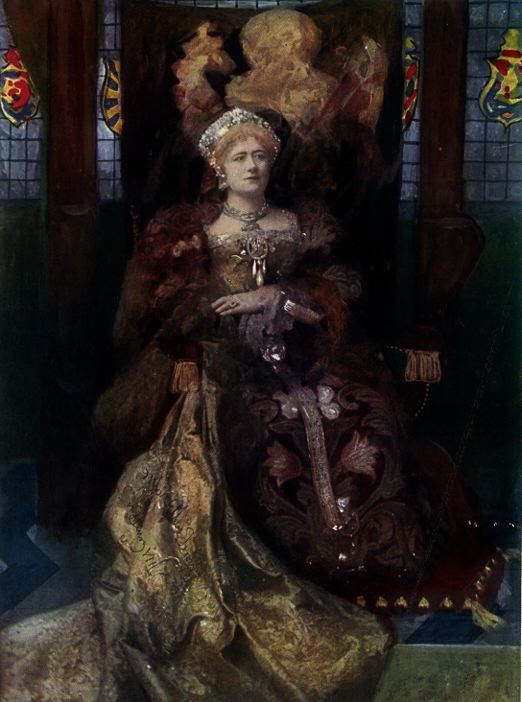Henry VIII (play)
Henry VIII is a collaborative history play, written by William Shakespeare and John Fletcher, based on the life of King Henry VIII of England. An alternative title, All Is True, is recorded in contemporary documents, the title Henry VIII not appearing until the play's publication in the First Folio of 1623. Stylistic evidence indicates that individual scenes were written by either Shakespeare or his collaborator and successor, John Fletcher. It is also somewhat characteristic of the late romances in its structure. It is noted for having more stage directions than any of Shakespeare's other plays.
During a performance of Henry VIII at the Globe Theatre in 1613, a cannon shot employed for special effects ignited the theatre's thatched roof (and the beams), burning the original Globe building to the ground.

Date
Most modern scholars date Henry VIII to 1613, the year in which the Globe Theatre burned down during one of the play's earliest known performances. One contemporary report states that the play was new at the time of the fire, having "been acted not passing 2 or 3 times before".
Despite this evidence, there has been much debate about the date of the work. Nicholas Rowe in 1709 wrote that the play must date from after the death of Elizabeth in 1603 because its "E[u]logy upon Q. Elizabeth, and her Successor K. James, in the latter end of his Henry VIII, is a Proof of that Play's being written after the Accession of the latter of those two Princes to the Crown of England".[9] Rowe was writing before the discovery of the document on the 1613 fire, which was first published by the 18th century scholar Thomas Tyrwhitt and seemed to confirm his view.
However, several 18th- and 19th-century scholars, including Samuel Johnson, Lewis Theobald, George Steevens, Edmond Malone, and James Halliwell-Phillipps, dated the play's composition to before 1603. Malone suggested that the brief passage in praise of James was probably added for a performance during his reign but that the extended glorification of Elizabeth implies that it was intended for her ears. James "hated her memory", so such praise was not likely to have been written under him. Malone mistook the 12 Feb 1604 Stationer's Register entry of "the Enterlude of K. Henry VIII" (Samuel Rowley's When You See Me You Know Me, 1605) as Shakespeare's play, and he argued that the reference to the newness of the play in 1613 derived from the fact that it had been expanded with a new prologue and epilogue, perhaps written by Ben Jonson. In fact, Shakespeare's play was first registered on 8 November 1623, along with 15 other previously unpublished works, in preparation for the publication of the 1623 First Folio. Halliwell-Phillipps also took the view that the play performed in 1613 was an altogether different work.
These views are no longer held by most modern scholars. Plays offering positive portrayals of major Tudor figures like Henry VIII (When You See Me You Know Me) and Queen Elizabeth (If You Know Not Me, You Know Nobody, 1605) were in fact performed, published, and re-published throughout the Stuart era. Since the play is now generally believed to be one of Shakespeare's collaborations with John Fletcher, the 1613 date is consistent with other such collaborations.












0 comments
Sign in or create a free account